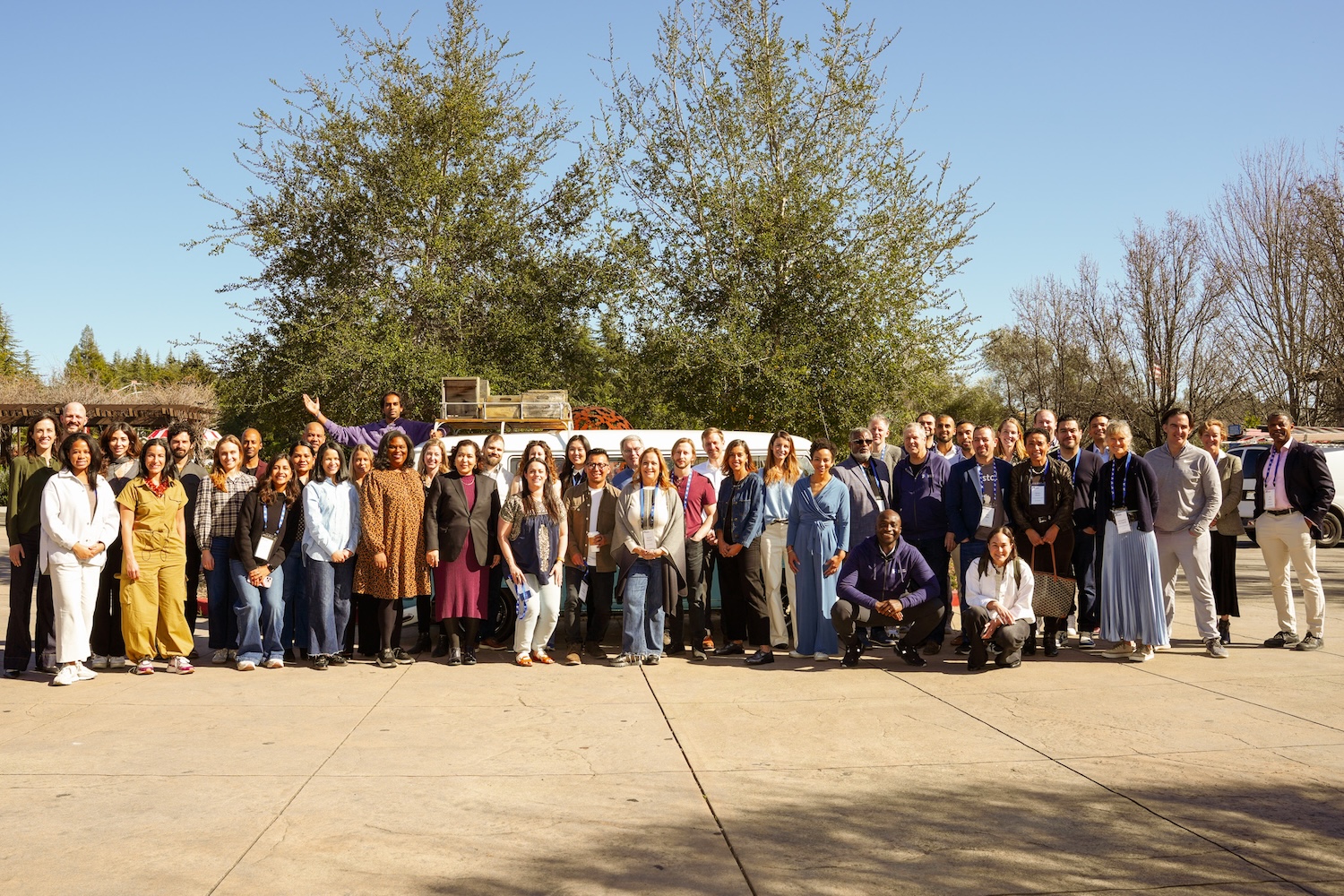David Kemper along with Kavya Shankar and Jason Dehaemers are the founders of Trust Neighborhoods, a Kansas City-based non-profit working to help neighborhoods preserve affordability and stop displacement.
In many American cities when neighborhoods gentrify, new opportunity and community wealth are out of reach for longtime members of the community that are displaced by rising rents and housing prices. Housing costs and displacement only exacerbate the wealth gap in this country.
As a 2019 New York Times investigation found: longtime Black neighborhoods in American cities are slowly being overrun by white homebuyers. “For decades, governments and private citizens have employed exclusionary tactics to prevent African Americans and other people of color from building wealth through homeownership and affordable housing,” the Center for American Progress wrote in a 2019 report on systemic inequality in America's housing system. An enormous amount of wealth has been denied and destroyed for BIPOC families through housing—from redlining and blockbusting to the racial bias in appraisal gaps in today's market. The Brookings Institution found that owner-occupied homes in Black neighborhoods are undervalued by $48,000 per home on average, amounting to $156 billion in cumulative losses. Along these dynamics, the wealth gap that's exacerbated by housing and displacement is acutely challenging for BIPOC families.
Trust Neighborhoods is trying to help shape more diverse and affordable neighborhood models for future generations, because wealth is more than just the assets we accumulate. Wealth is the product of opportunities afforded by stable neighborhoods: education, better access to food, transportation, and proximity to jobs. Here's how we're doing it.
The MINT model
In 2019, Trust Neighborhoods built the Mixed-Income Neighborhood Trust (MINT) model. These MINTs are designed to protect residents in gentrifying neighborhoods from displacement and create community control over development. Each MINT acquires, renovates, and operates a scattered portfolio of rental units. It caps rent on the majority of its units while allowing a minority to float at future market rates. This creates a perpetual cross-subsidy for the rent-controlled units. The underlying idea is that, over time, market-rate rents will pay to keep pre-existing affordable housing affordable in perpetuity—all overseen by community governance.
We came to identify the need for this model by spending time interviewing neighborhood leaders, housing practitioners, and community development experts about their pain points in these neighborhoods. Following conversations with dozens of neighborhood leaders, we heard again and again the need for a missing tool that would let a neighborhood own some of its properties in anticipation of gentrification to protect current renting residents.
The way a MINT works is not that much different than a typical development, where the developer is raising capital from outside sources. Except with a MINT, it's an organization within the community that raises the capital, owns the property, and manages it—exactly like a developer would, with more focus. These neighborhood-based organization should have some real estate capacity, legitimacy, and a track record of doing good work in that neighborhood. This could be a community development corporation, For one of our MINT pilots, it's a neighborhood association. We especially want to see this tool used by BIPOC-led organizations to change who changes neighborhoods.
We support this existing organization with creating a new MINT focused on their neighborhood. We help them identify the scope of the unit mix and types of units. Does the neighborhood want to use this for sixplexes or single family rentals or both? We workshop the legal purpose with the neighborhood and residents with lived experience, building nuance on top of the affordability mandate and protections against displacement. One neighborhood's resident group wrote in their MINT that today's single family rentals can only be sold into homeownership if it serves anti-displacement. We also help identify execution partners to fill any gaps in acquisition, development, or property management needs, and crucially help raise outside capital into the MINT.
Once the MINT's organization and leadership has been established, it builds a portfolio of diverse units with this upfront capital. This lets the neighborhood step into its housing market with the speed of private buyers it wants to compete against, but unlike the same old story of buying up properties and investing in property that ultimately pushes out current residents, the MINT lets residents control a strategic chunk of their neighborhood in the interest of the community.
All of this is done with a governance structure with checks and balances to ensure everything is above board. Each MINT uses a perpetual purpose trust, a structure increasingly common for companies, as recently covered by The New Yorker, and one Trust Neighborhoods has helped bring into community development. Each MINT has its own general manager function carried out by the existing neighborhood-based organization, an operating board focused on the real estate capacity of the project, and a trustee committee that regularly checks that the MINT is serving its resident co-authored purpose of preventing displacement in the neighborhood.

After beginning this work in 2019, Trust Neighborhoods has now helped two neighborhood-based organizations, Growing Together in Tulsa, Oklahoma, and the Lykins Neighborhood Association in Kansas City, Missouri, launch their own MINTs. Each is developing their portfolios.
The Kendall-Whittier Neighborhood Trust in Tulsa has over a dozen properties, and the Lykins Neighborhood Trust now controls 20. There are early promising indicators of the ability of these MINTs to both raise the quality of housing while protecting renting residents from displacement. The seller of one set of six rentals the Tulsa MINT purchased told Growing Together's team that every other buyer was going to raise the rents after kicking out the existing families, some of whom had children in the local school.
The scale of need is so much greater than these two neighborhoods and these dozens of units. Over 50 other neighborhood groups across the country have reached out to us about deploying the MINT model, and we're beginning to work with several new partners from coast to coast.
Building indirect wealth and opportunity
A major pillar in the framework is indirect wealth creation: the building of opportunity. A great tragedy right now in America is that when neighborhoods transition rapidly to become higher opportunity, the very residents who would most benefit from that opportunity are getting kicked out of those neighborhoods by rising rents and housing costs.
A neighborhood trust can secure the place for those residents in those neighborhoods, which has a long tail of positive impacts: improved economic opportunity, better education, better access to food. The goal of the MINT, as it relates to indirect wealth building, is to ensure that opportunities are accessible to long-time residents as the neighborhood transitions.
Sharing profits with community
The MINT model uses a profit-sharing mechanism that reserves a portion of cash flow for community reinvestment. This does not directly generate wealth for individual households; however, community members benefit from a substantial share of profits going to community infrastructure projects (like, say, reconstructing sidewalks) or support programs (free financial literacy training) without any investment. This is an important advantage relative to many direct wealth-generation models, like home ownership. We believe this will capture potentially significant portions of rising land value in neighborhoods where that value was destroyed by unjust reasons.
Alongside changing who changes our cities and protecting renters from displacement, we're energized about the potential of what it means to have neighborhood ownership extend beyond control to substantial financial interest—we believe this will contribute to corrective justice in the near-to-medium term and help finally create more stable, just communities in perpetuity.
Ensuring access to affordability can help improve opportunity
A MINT is not a silver bullet for the housing market, but rather an added tool to the toolkit to make neighborhoods more economically diverse and give future generations better opportunities. It's a way to preserve affordability and improve opportunities for historically marginalized communities. We know that homeownership is the biggest creator of wealth in America—we're not trying to change or upend that, and MINTs can even advance that. Alongside those efforts, we're looking to foster opportunity and preserve affordability in perpetuity. Simply put: MINTs can help to build indirect wealth at the community level and ensure that as neighborhoods change, longtime residents are given the same opportunities to succeed.





